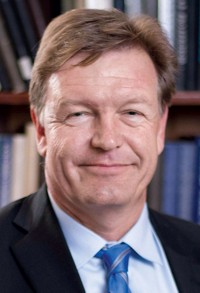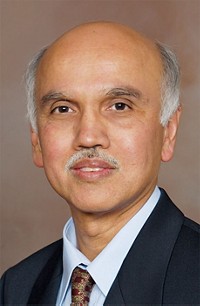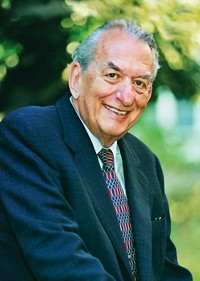Advertisement
Grab your lab coat. Let's get started
Welcome!
Welcome!
Create an account below to get 6 C&EN articles per month, receive newsletters and more - all free.
It seems this is your first time logging in online. Please enter the following information to continue.
As an ACS member you automatically get access to this site. All we need is few more details to create your reading experience.
Not you? Sign in with a different account.
Not you? Sign in with a different account.
ERROR 1
ERROR 1
ERROR 2
ERROR 2
ERROR 2
ERROR 2
ERROR 2
Password and Confirm password must match.
If you have an ACS member number, please enter it here so we can link this account to your membership. (optional)
ERROR 2
ACS values your privacy. By submitting your information, you are gaining access to C&EN and subscribing to our weekly newsletter. We use the information you provide to make your reading experience better, and we will never sell your data to third party members.
Synthesis
George A. Olah Award in Hydrocarbon or Petroleum Chemistry
January 23, 2006
| A version of this story appeared in
Volume 84, Issue 4
Sponsored by the George A. Olah Endowment
A childhood fascination with fireworks, together with an excellent high school teacher in his hometown of Bangalore, India, who piqued his interest in chemistry, led G. K. Surya Prakash to make chemistry his life's work. Today, he is one of the top 10 most cited chemists of Indian origin in the world, according to the ISI Citation Index.
Prakash earned a B.S. in chemistry at Bangalore University and an M.Sc. at Indian Institute of Technology, Madras. Thanks to a graduate fellowship, he came to the U.S. to study at Case Western Reserve University, Cleveland. There he met George A. Olah and joined his group. That marked the beginning of a three-decades-long professional partnership with the Nobel Laureate.
After Prakash had been at Case Western for about three years, Olah decided to move to the University of Southern California (USC) and asked Prakash to come along. Prakash did, and he wrote his thesis in physical organic chemistry at USC and got his Ph.D. there in 1978. Prakash stayed on at USC, first as a postdoc and then through a succession of research and tenure-track faculty positions. Today, at 52, he holds the George A. & Judith A. Olah Nobel Laureate Chair in Hydrocarbon Chemistry. He also is the scientific director of USC's Loker Hydrocarbon Research Institute.
"Surya in his own right has fundamentally contributed to solving a wide range of significant problems in hydrocarbon chemistry," Olah says.
Prakash has used superacids to generate a large number of intriguing carbocations and heteroatom-substituted cations and onium ions, studying their structure and behavior by nuclear magnetic resonance spectroscopy. Many of these ions are key intermediates in acid-catalyzed hydrocarbon transformations. He has studied such seminal systems as the 2-norbornyl and cyclopropylcarbinyl cations, whose controversial structures he helped to solve. The 2-norbornyl cation studies paved the way for his later studies of C-H σ-bond activation in hydrocarbons, he says.
Prakash also has utilized solid and liquid superacids in organic synthesis. Using superacids as solvents, he has developed selective hydroxylations, aminations, nitrations, halogenations, sulfurations, carbonylations, and isomerizations of aromatic as well as aliphatic hydrocarbons. His work in electrophilic hydrocarbon chemistry is seminal, according to Olah.
In collaboration with chemists at the Jet Propulsion Laboratory, Prakash developed a direct-oxidation fuel cell that uses liquid methanol (and related fuels) and thus allows fossil-fuel resources to be used efficiently. The direct methanol liquid-feed fuel cell converts the fuel's chemical energy directly into electrical energy without burning it. It offers numerous advantages over existing fuel cells that use hydrogen gas as the fuel. Hydrogen is not a logistically convenient fuel, explains a colleague of Praskash's. "Hydrogen fuel cells require pure hydrogen that is generated by partially burning fuels like methanol, gasoline, diesel, et cetera, in a cumbersome, high-temperature reformer." The hydrogen is produced along with carbon monoxide, which causes problems of its own. The direct-oxidation methanol fuel cell, however, does not have these drawbacks. It does not pollute the environment, and it can replace batteries in essentially any power application, from emergency power supplies to cell phones to automobiles.
Prakash also has developed a low-cost, improved polymer electrolyte membrane made of poly(styrenesulfonic acid)-poly(vinylidene fluoride) that makes his team's fuel-cell technology highly efficient and commercially viable.
Prakash has received numerous awards and honors, including the 2004 ACS Award for Creative Work in Fluorine Chemistry, another area in which he has made major contributions.
The award address will be presented before the Division of Organic Chemistry.-Ron Dagani






Join the conversation
Contact the reporter
Submit a Letter to the Editor for publication
Engage with us on Twitter